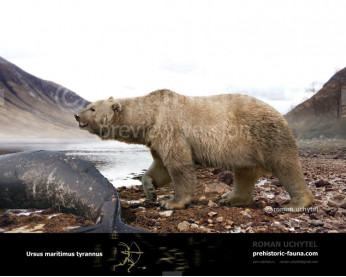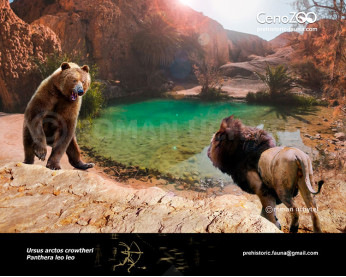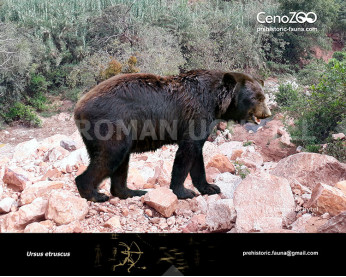Ursus priscus
391391Ursus priscus (Ursus priscus (GOLDFUSS, 1818))
Ursus arctos priscus
Pleistocene brown bear
Order: Carnivora
Family: Ursidae
Dimensions: length - 2,9 m, height - 140-160 сm, weight - 300-1000 kg
Temporal range:the Late Pleistocene - Holocene of Europe
From the beginning of the first scientific explorations of caves, the Zoolithenhöhle in Franconia, Germany, was famous for its rich fossil content. In addition to the numerous remains of cave bears and other animals, a skull of a clearly distinct kind of bear was found, originally called Ursus priscus GOLDFUSS, 1818. Three years later, the term Ursus fossilis was introduced along with a published description of the skull, which led to confusion about the adequate designation of the new species. U. priscus was regarded as a contemporary of the cave bear, i.e. Late Pleistocene in age, but the geological age of the find is still unclear even today, and from the overall state of preservation it could be even of Holocene age. The specimen probably represents a female individual. A revised study of the skull demonstrates that it is identical to modern U. arctos.On the basis of this evidence, U. priscus, U. fossilis and its synonyms are invalid terms. The nature of Late Pleistocene brown bears is still not well known.
Neues Jahrbuch für Geologie und Paläontologie - Abhandlungen Band 245 Heft 3 (2007), p. 331 - 339
published: Oct 16, 2007
Ursus priscus (Ursus priscus (GOLDFUSS, 1818))
Ursus arctos priscus
Pleistocene brown bear
Order: Carnivora
Family: Ursidae
Dimensions: length - 2,9 m, height - 140-160 сm, weight - 300-1000 kg
Temporal range:the Late Pleistocene - Holocene of Europe
From the beginning of the first scientific explorations of caves, the Zoolithenhöhle in Franconia, Germany, was famous for its rich fossil content. In addition to the numerous remains of cave bears and other animals, a skull of a clearly distinct kind of bear was found, originally called Ursus priscus GOLDFUSS, 1818. Three years later, the term Ursus fossilis was introduced along with a published description of the skull, which led to confusion about the adequate designation of the new species. U. priscus was regarded as a contemporary of the cave bear, i.e. Late Pleistocene in age, but the geological age of the find is still unclear even today, and from the overall state of preservation it could be even of Holocene age. The specimen probably represents a female individual. A revised study of the skull demonstrates that it is identical to modern U. arctos.On the basis of this evidence, U. priscus, U. fossilis and its synonyms are invalid terms. The nature of Late Pleistocene brown bears is still not well known.
Neues Jahrbuch für Geologie und Paläontologie - Abhandlungen Band 245 Heft 3 (2007), p. 331 - 339
published: Oct 16, 2007

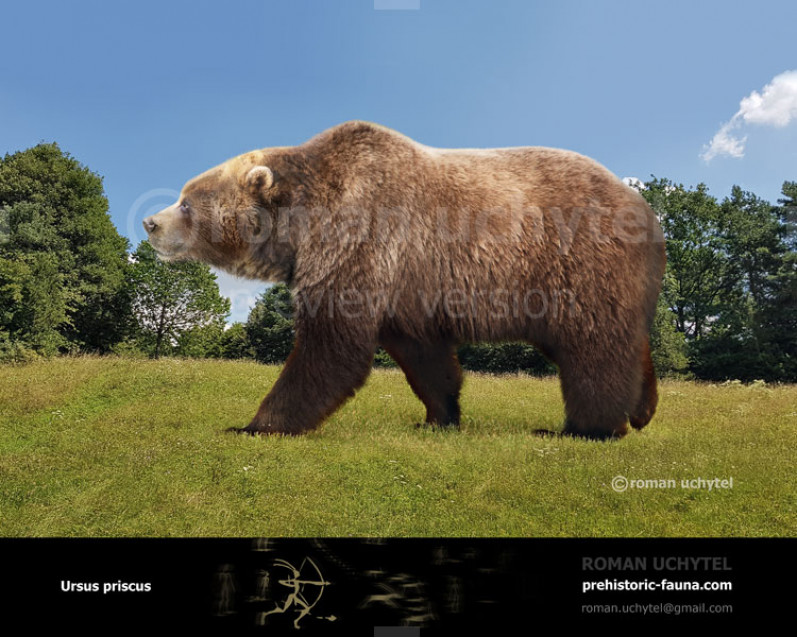
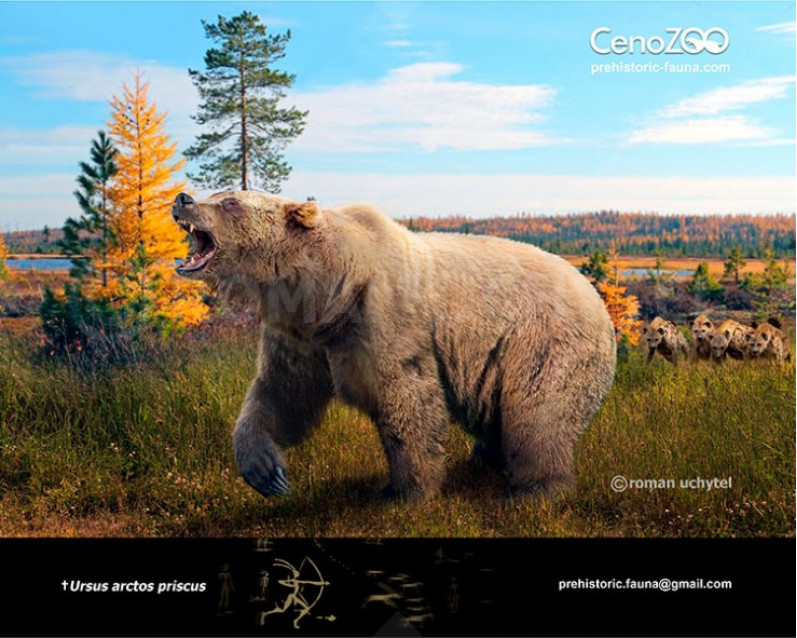
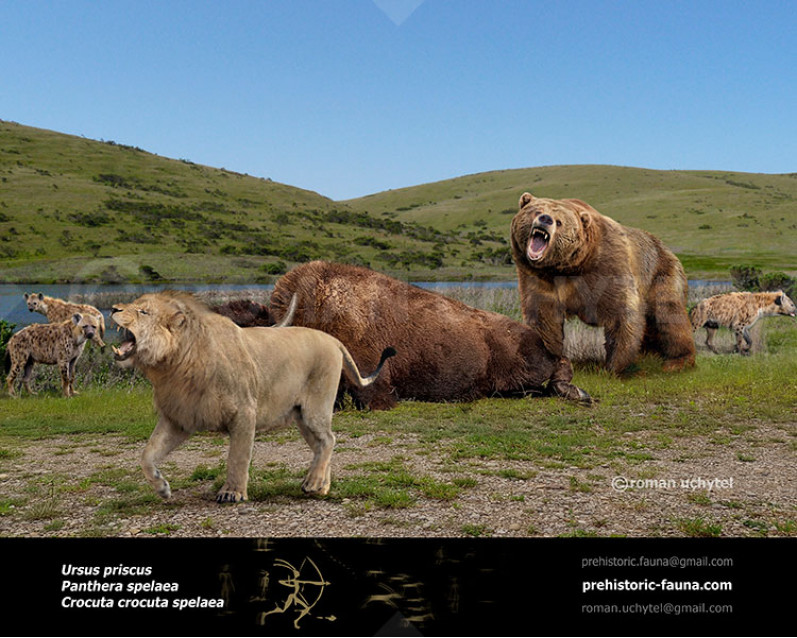
-797x638.jpg)
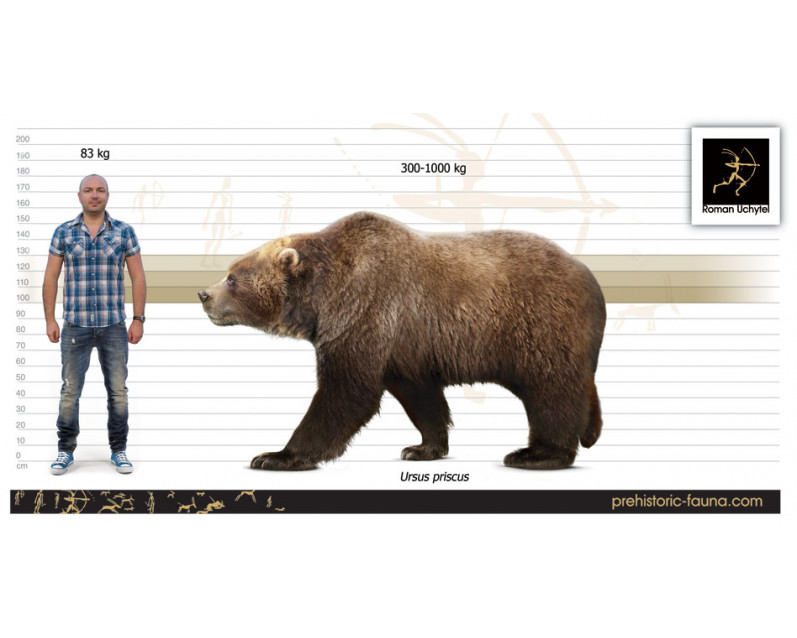



-70x56.jpg)

-346x277.jpg)
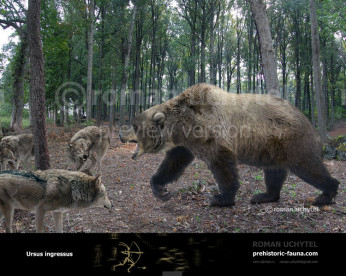
-346x277.jpg)
